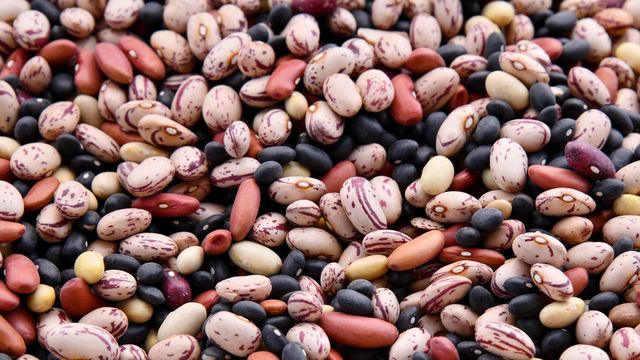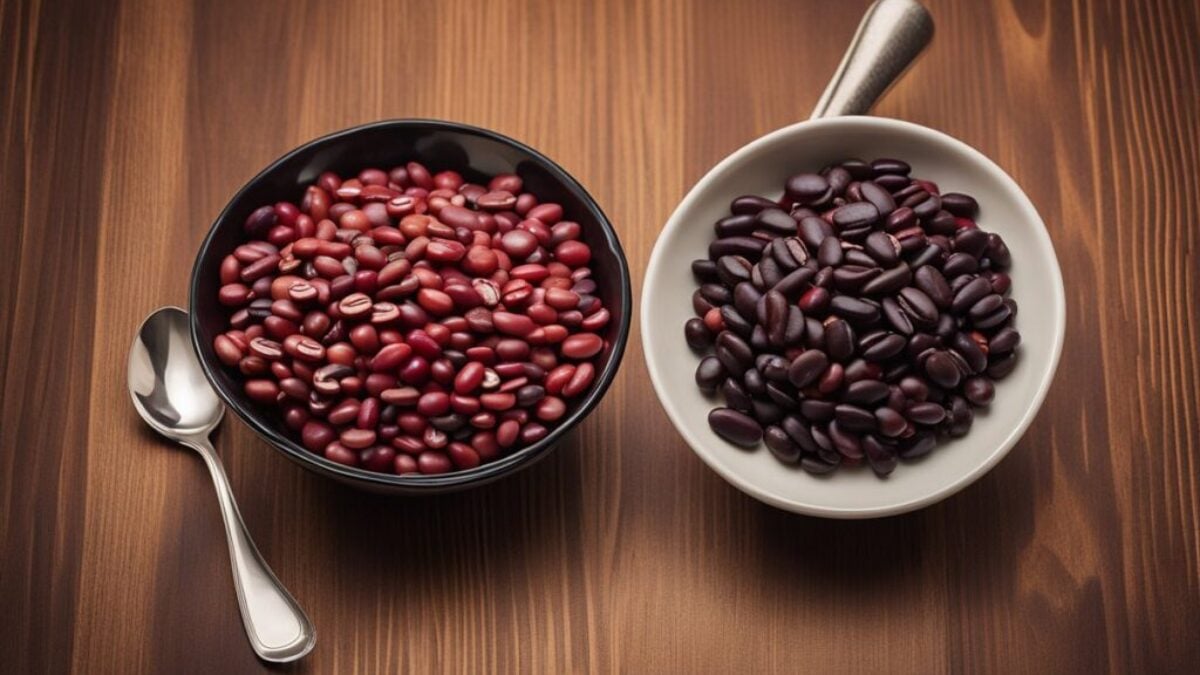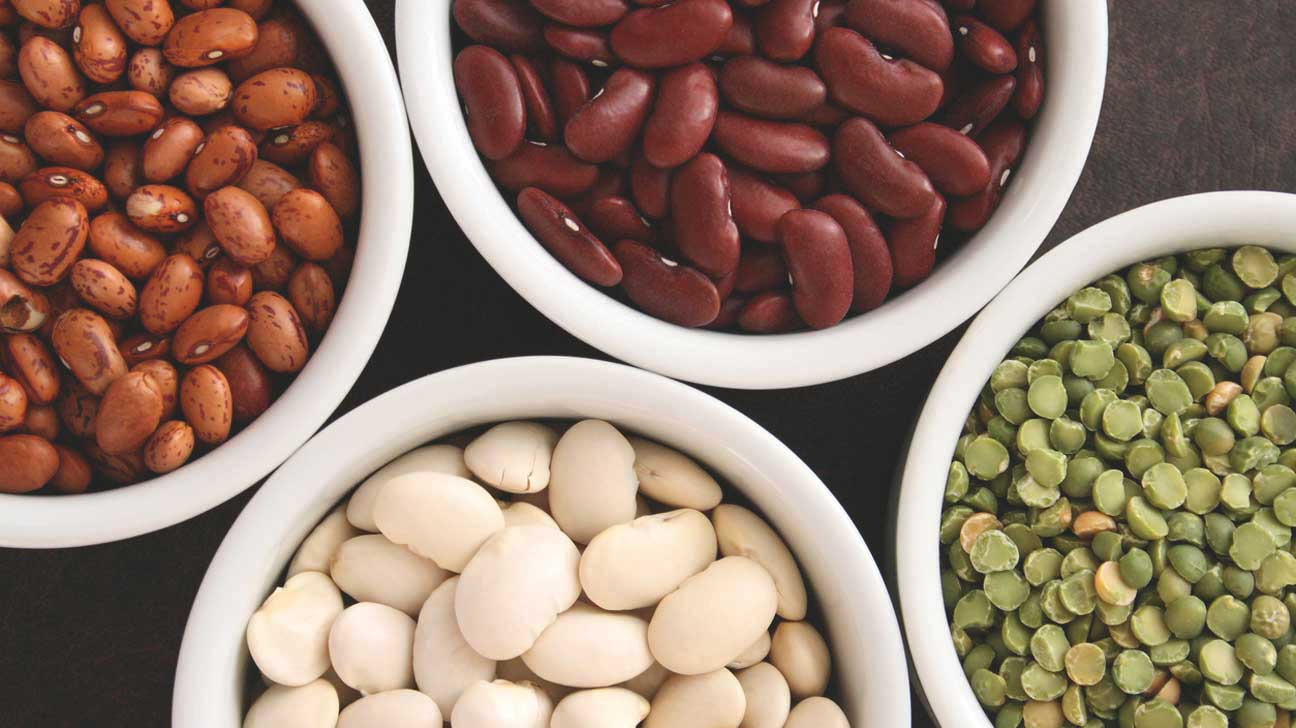Pinto Beans Overview

Pinto beans are a type of bean that originated in Mexico and are commonly used in Mexican cuisine. They are small, oval-shaped beans with a speckled or mottled appearance, which is where they get their name (pinto means painted in Spanish). Pinto beans have a creamy texture and a slightly nutty, earthy flavor. They are a nutritious food, packed with essential vitamins, minerals, and fiber. These beans are versatile and can be used in a wide variety of dishes, including soups, stews, burritos, and salads. Their mild flavor makes them a great base for adding other flavors and seasonings.
Pinto Beans: Nutritional Value And Health Benefits
Pinto beans have a high nutritional value and offer several health benefits. They are rich in fiber, which aids in digestion and helps maintain a healthy weight. Pinto beans are also a good source of protein, essential for muscle growth and repair. Additionally, they provide important vitamins and minerals, including folate, iron, and magnesium. These nutrients support red blood cell production, promote heart health, and contribute to overall well-being. Incorporating pinto beans into your diet can help lower cholesterol levels, regulate blood sugar, and reduce the risk of chronic diseases such as heart disease and diabetes.
Pinto Beans: Culinary Uses And Popularity
Pinto beans are a versatile ingredient used in various culinary dishes and cuisines around the world. They are commonly used in Mexican and Southwestern cuisine, where they are the star ingredient in dishes like refried beans, chili, and burritos. Pinto beans can be cooked and served as a side dish, or added to soups, stews, salads, and casseroles. They can also be mashed and used as a filling for tacos or enchiladas. Due to their mild flavor and creamy texture, pinto beans have gained popularity among both vegetarian and meat-eating individuals who are looking for a healthy and nutritious addition to their meals.
Kidney Beans Overview

Kidney beans, scientifically known as Phaseolus vulgaris, are a type of legume that is widely consumed around the world. They are kidney-shaped in appearance, hence the name, and come in various colors, including red, white, and speckled. Kidney beans are an excellent source of protein, complex carbohydrates, fiber, and essential minerals such as iron and potassium. They offer numerous health benefits, including aiding in digestion, promoting heart health, and supporting weight management. Kidney beans are commonly used in a variety of dishes, including soups, stews, salads, and chili. They have a robust, meaty texture and a slightly nutty flavor, making them a versatile and popular ingredient in many cuisines.
Kidney Beans: Nutritional Value And Health Benefits
Kidney beans are packed with nutritional value, making them a healthy addition to any diet. They are an excellent source of plant-based protein, providing essential amino acids for muscle growth and repair. Kidney beans are also high in fiber, which aids in digestion and promotes a healthy gut. Additionally, they are rich in potassium, which helps regulate blood pressure and maintain proper heart function. Moreover, kidney beans are loaded with iron, a mineral necessary for the production of red blood cells and oxygen transportation in the body. Including kidney beans in your diet can contribute to overall health and well-being.
Kidney Beans: Culinary Uses And Recipe Ideas
Kidney beans are a versatile ingredient that can be used in a variety of culinary dishes. They are a staple in many traditional recipes such as chili, bean soups, and stews. Their hearty texture and nutty flavor make them a great addition to salads and grain bowls. Kidney beans can also be mashed and used as a filling for tacos or as a base for veggie burgers. For a twist on traditional recipes, try incorporating kidney beans into pasta dishes, casseroles, or even as a topping for nachos. The possibilities are endless when it comes to including kidney beans in your cooking repertoire.
Pinto Beans Vs Kidney Beans: Appearance And Texture

Pinto beans and kidney beans have distinct differences in appearance and texture. Pinto beans are small, round beans with a mottled appearance, featuring a beige or pink background with brown speckles. They have a smooth and creamy texture when cooked, making them perfect for mashing or pureeing. On the other hand, kidney beans are larger and kidney-shaped, with a deep red color. They have a slightly grainy texture and hold their shape well when cooked, making them ideal for salads or dishes that require beans to maintain their form.
Pinto Beans: Characteristics And Texture Comparison
Pinto beans are small, round beans with a mottled appearance, featuring a beige or pink background with brown speckles. They have a smooth and creamy texture when cooked, making them perfect for mashing or pureeing. Pinto beans are known for their ability to absorb flavors, making them versatile in various recipes. Their texture is soft and tender, making them easy to eat and enjoy. Pinto beans also have a slightly sweet and nutty flavor, which adds depth to dishes. Their characteristic appearance and texture make them a popular choice in Mexican and Southwestern cuisine.
Kidney Beans: Color And Size Differences
Kidney beans, unlike pinto beans, come in a variety of colors, including dark red, light red, and even white. The size of kidney beans is typically medium to large, making them more substantial compared to the smaller pinto beans. The dark red kidney beans, also known as “red kidney beans,” are the most commonly found variety. The light red kidney beans are slightly lighter in color and have a milder flavor. The white kidney beans, also known as cannellini beans, have a creamy texture and are often used in Mediterranean dishes. These color and size differences make kidney beans easily distinguishable from pinto beans.
Flavor Profiles Of Pinto Beans And Kidney Beans

Pinto beans have a nutty and earthy flavor profile, making them a popular choice for dishes such as soups, stews, and Mexican cuisine. They have a soft and creamy texture, which adds a smoothness to dishes. On the other hand, kidney beans have a mild, slightly sweet flavor. They have a firmer texture, giving them a meaty and substantial feel in recipes. These flavor profiles and textures make pinto beans and kidney beans unique in their own way, adding depth and variety to a range of culinary creations.
Pinto Beans: Taste Profile And Flavor Notes
Pinto beans are known for their nutty and earthy flavor profile, which adds depth and richness to dishes. They have a mild and slightly sweet taste, making them versatile for various culinary creations. The creamy texture of pinto beans enhances the overall smoothness of dishes. They can absorb flavors well, making them perfect for soups, stews, and Mexican cuisine. Whether mashed or left whole, pinto beans provide a delightful taste experience that is loved by many. Their unique flavor notes make them a popular choice for those seeking a flavorful and nutritious addition to their meals.
Kidney Beans: Flavor Intensity And Cooking Methods
Kidney beans have a strong and distinct flavor that is often described as rich and meaty. This intense flavor makes them a popular choice for hearty dishes such as chili, stews, and bean soups. Kidney beans can hold up well to bold and spicy flavors, making them ideal for dishes with strong seasonings. They also absorb flavors well during cooking, allowing them to enhance the overall taste of the dish. When it comes to cooking methods, kidney beans are typically soaked overnight to reduce cooking time and improve digestibility. They can be boiled, simmered, or pressure-cooked until tender. It is important to note that raw or undercooked kidney beans contain a toxin called lectin, so they must be thoroughly cooked to ensure safety.
Cooking And Preparation Methods

When it comes to cooking and preparation methods, both pinto beans and kidney beans have their own techniques for optimal results.
Pinto beans are typically soaked overnight to reduce cooking time and improve their texture. They can then be boiled or simmered until tender. Pinto beans can also be pressure-cooked for a faster cooking time.
Kidney beans also require soaking to reduce cooking time and improve digestibility. After soaking, they can be boiled, simmered, or pressure-cooked until tender. It is important to note that raw or undercooked kidney beans contain a toxin called lectin, so they must be thoroughly cooked to ensure safety.
Overall, both beans can be prepared in a variety of ways, allowing for versatility in cooking.
Pinto Beans: Cooking Tips And Preparation Techniques
When it comes to cooking pinto beans, there are a few tips and techniques that can help you achieve the best results. Firstly, it is recommended to soak the pinto beans overnight to reduce cooking time and improve their texture. Once they are soaked, you can either boil or simmer them until tender. If you are short on time, using a pressure cooker can significantly speed up the cooking process. Additionally, adding flavorings such as onions, garlic, and spices can enhance the taste of the beans. Overall, pinto beans are versatile and can be prepared in various ways to suit your preferences.
Kidney Beans: Soaking Methods And Cooking Times
Kidney beans require soaking before cooking to ensure they are properly hydrated and to reduce their cooking time. There are two main methods for soaking kidney beans: hot soak and cold soak. For the hot soak method, add 10 cups of water for every pound (2 cups) of kidney beans in a large pot. Bring to a boil and let them boil for 2-3 minutes. Then, remove from heat, cover, and let them soak for up to 4 hours. The cold soak method involves covering the beans with cold water and letting them soak overnight. Once soaked, kidney beans can be cooked by boiling or simmering for approximately 20-30 minutes. It is important to note that undercooked kidney beans contain a toxin called phytohemagglutinin, so it is crucial to cook them thoroughly to ensure their safety.
Conclusion

In conclusion, both pinto beans and kidney beans are nutritious and versatile legumes with their own unique qualities. Pinto beans offer a creamy texture and mild flavor, making them perfect for soups, stews, and refried beans. On the other hand, kidney beans have a firmer texture and a rich, earthy taste, making them ideal for salads, chili, and bean-based dips. Incorporating both varieties into your diet can provide a range of health benefits, including increased fiber and plant-based protein intake. So, whether you choose pinto beans or kidney beans, you can enjoy their delicious flavors and reap their nutritional benefits.
Health Benefits Of Incorporating Both Pinto Beans And Kidney Beans
Both pinto beans and kidney beans offer numerous health benefits when incorporated into a balanced diet. They are excellent sources of dietary fiber, which aids in digestion and helps maintain healthy cholesterol levels. Additionally, both beans are packed with plant-based protein, making them an ideal choice for vegetarian and vegan diets. The high levels of iron present in both beans help promote healthy blood circulation and prevent iron deficiency anemia. Furthermore, the abundance of vitamins and minerals in these legumes supports overall immune function and contributes to overall well-being. Incorporating both pinto beans and kidney beans into your meals can provide a diverse array of health benefits, making them valuable additions to any diet.
Recipe Recommendations And Final Thoughts On Bean Varieties
When it comes to incorporating pinto beans and kidney beans into your meals, the options are endless. For a classic Mexican dish, try making a hearty pot of pinto bean chili with ground beef, onions, and tomatoes. For a delicious and nutritious salad, combine kidney beans with fresh vegetables, such as bell peppers and cucumbers, and drizzle with a tangy vinaigrette. Both beans can also be used to create delicious dips, like pinto bean hummus or kidney bean salsa. Overall, these versatile legumes offer endless possibilities in the kitchen and are a great addition to any meal. So, get creative and explore the flavors and textures of pinto beans and kidney beans in your dishes.
FAQ About Pinto Bean Vs Kidney Bean: Exploring Bean Varieties
Q: What is the main difference between pinto beans and kidney beans?
A: The main difference lies in their appearance and taste. Pinto beans are smaller and have a mottled appearance while kidney beans are larger and have a darker red color. In terms of taste, pinto beans are more earthy and mild, whereas kidney beans have a stronger flavor with a slightly sweet undertone.
Q: Are there any nutritional differences between pinto beans and kidney beans?
A: Yes, there are slight nutritional differences. Pinto beans are slightly higher in calories and carbohydrates compared to kidney beans. On the other hand, kidney beans contain more protein and fiber than pinto beans. Both beans are excellent sources of nutrients like iron, magnesium, and potassium.
Q: Can pinto beans and kidney beans be used interchangeably in recipes?
A: Yes, pinto beans and kidney beans can often be used interchangeably in recipes, especially in dishes like soups, stews, and salads. However, keep in mind that their different sizes and textures may slightly alter the final taste and appearance of the dish. It’s best to use them based on personal preference or the specific recipe requirements.
Q: Which bean is better for chili – pinto beans or kidney beans?
A: Both pinto beans and kidney beans can be used in chili, depending on your preference. Pinto beans are more commonly used in traditional chili recipes, providing a creamy texture and subtle flavor. Kidney beans, with their hearty and meaty texture, offer a bolder taste to chili dishes. Ultimately, the choice between pinto beans and kidney beans in chili comes down to your desired flavor and texture profile.
Q: How should pinto beans and kidney beans be prepared before cooking?
A: To prepare both pinto beans and kidney beans, it is recommended to soak them overnight in water before cooking. This helps soften the beans, reduce cooking time, and improve digestibility. After soaking, rinse the beans thoroughly and discard any discolored or damaged ones. Then, they can be cooked using your preferred method – boiling, pressure cooking, or using a slow cooker.

Lenoir’s Bistro & Bakery, a charming and chic cafe, has been delighting patrons with an array of delectable delights since its inception. From mouthwatering breakfast bites to succulent burgers and sandwiches and a tempting selection of pasta, sides, and desserts, Lenoir’s Bistro & Bakery is the go-to destination for food enthusiasts seeking a delightful dining experience. Founded by a passionate culinary team with a vision to create a welcoming and stylish eatery, Lenoir’s Bistro & Bakery has seamlessly blended the art of baking with the craft of preparing savory dishes. The result is a menu that caters to diverse tastes and preferences, offering something to satisfy every craving.